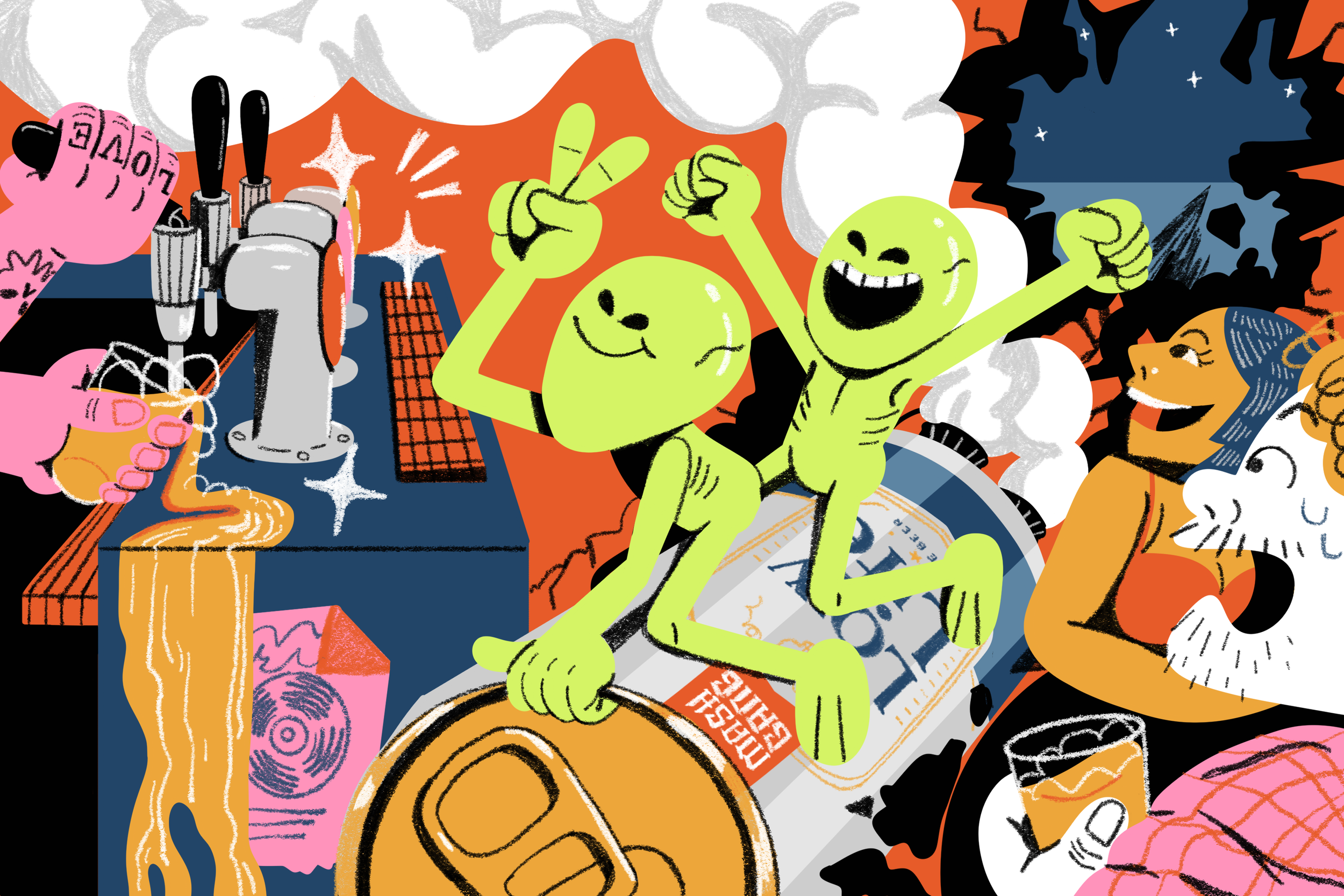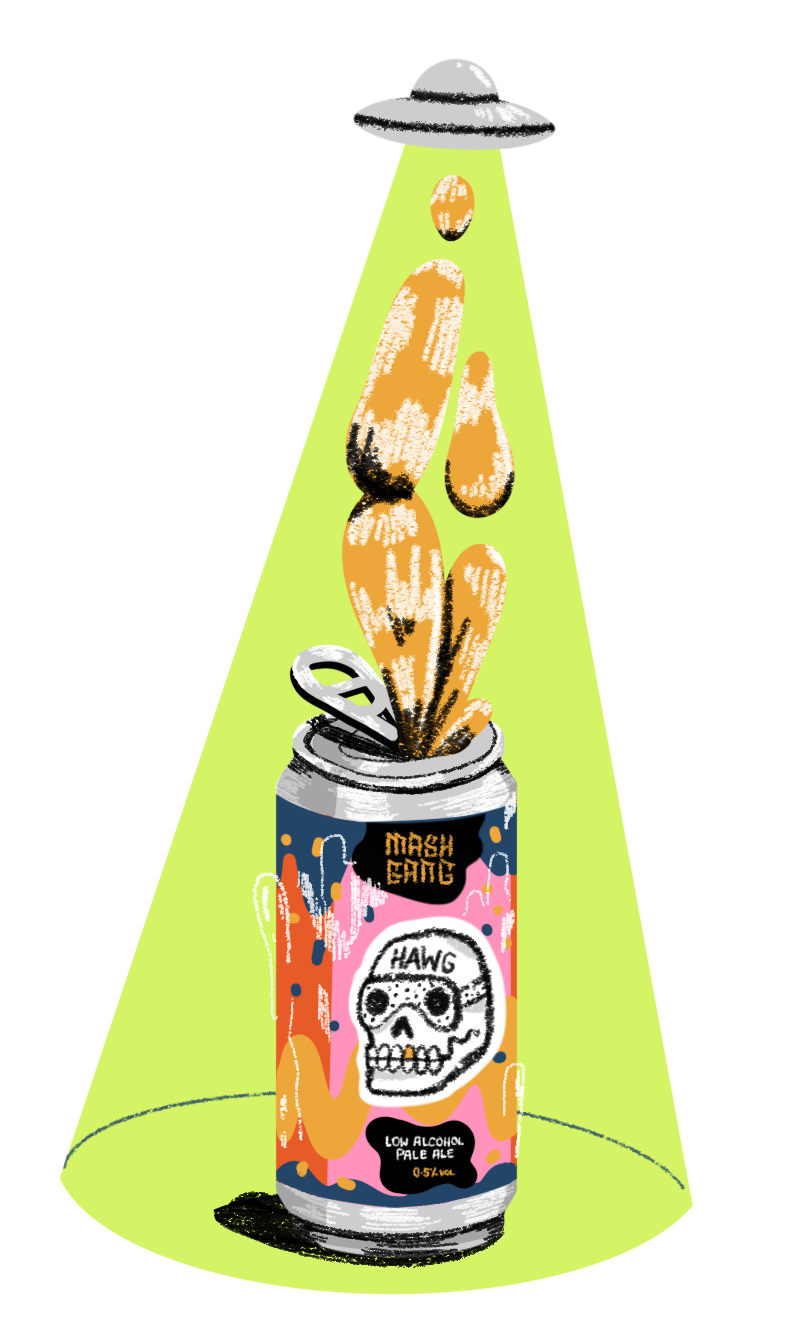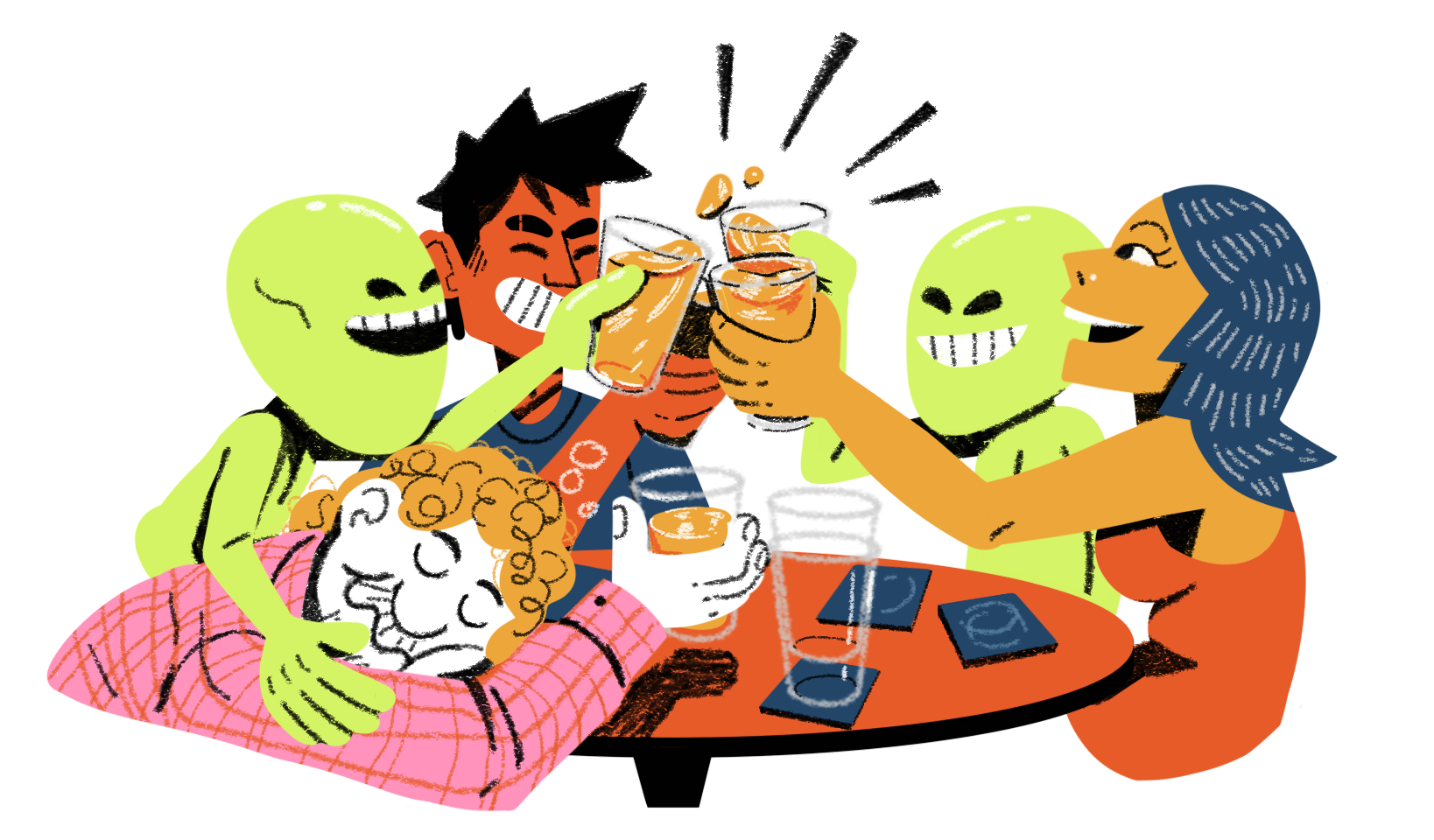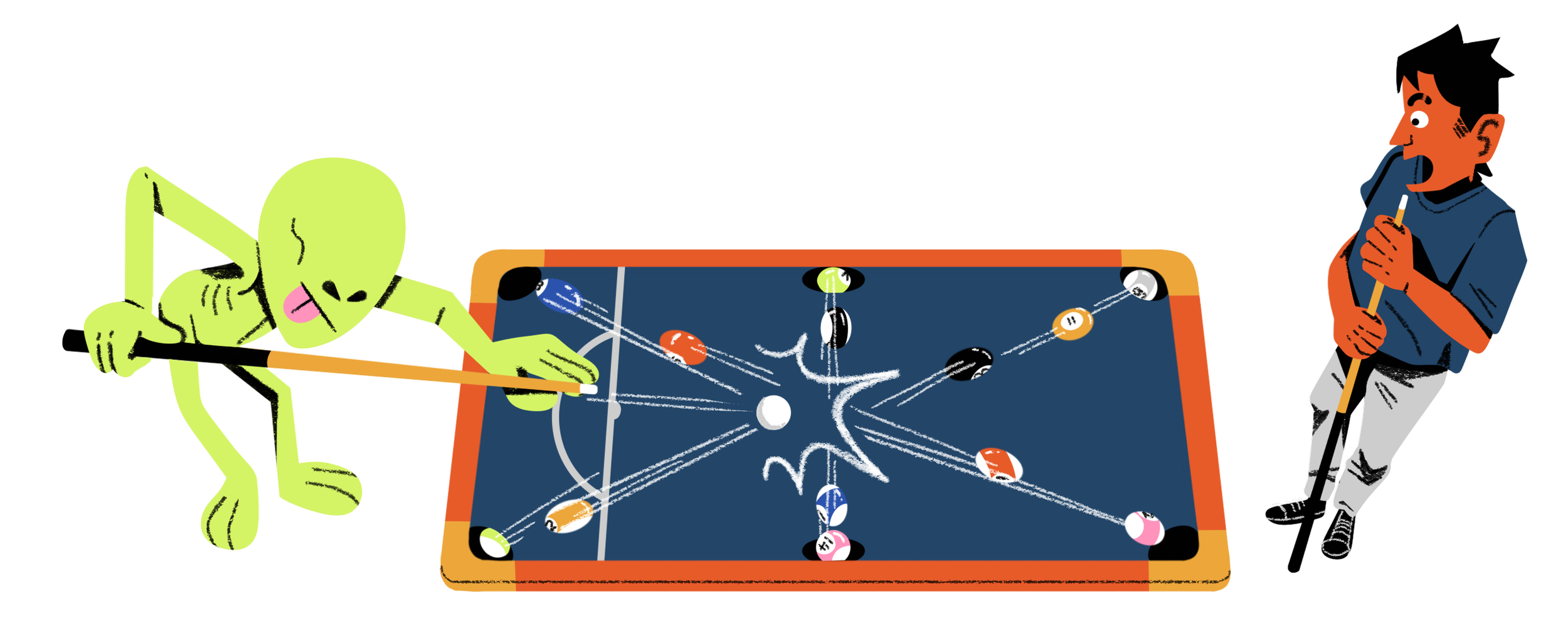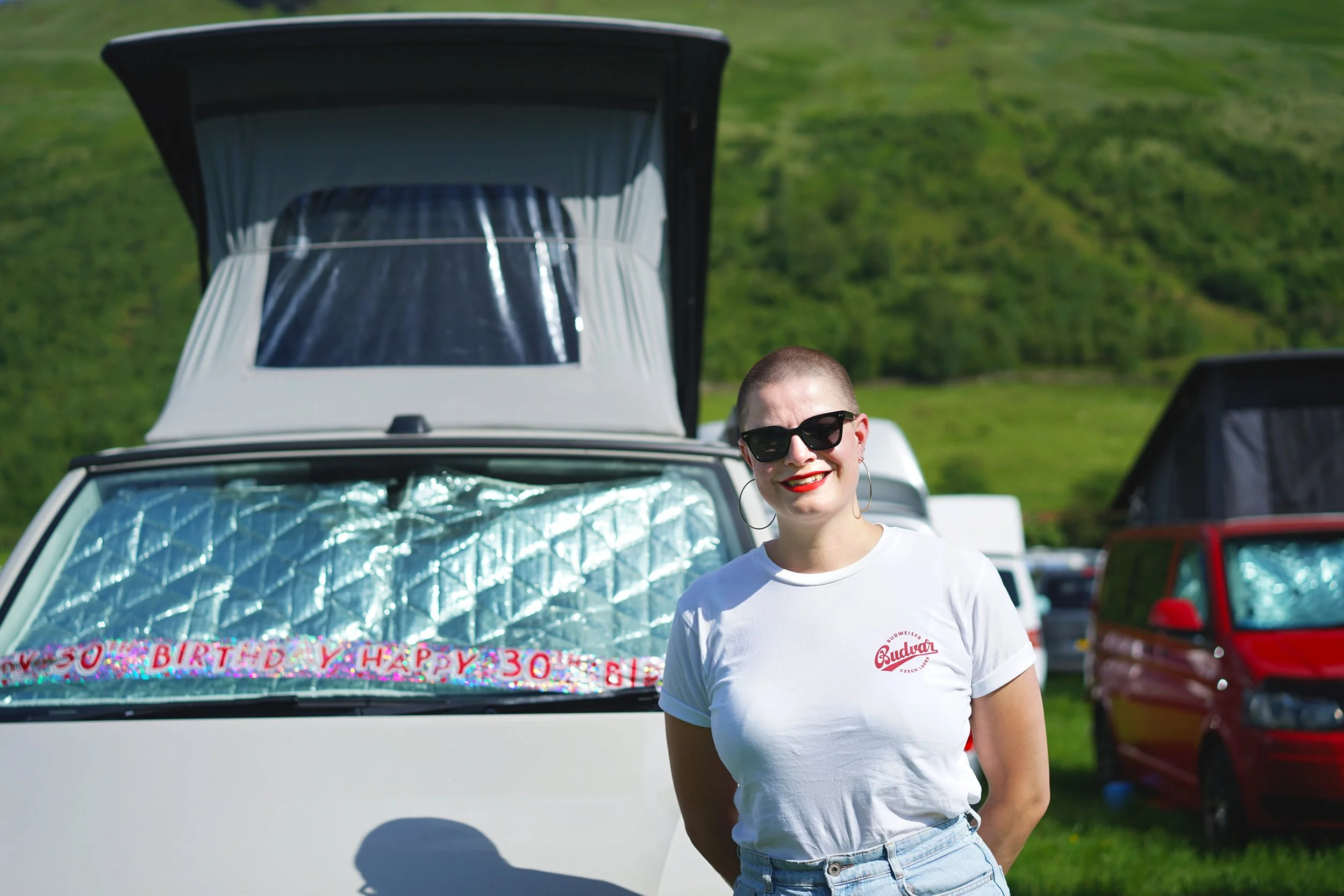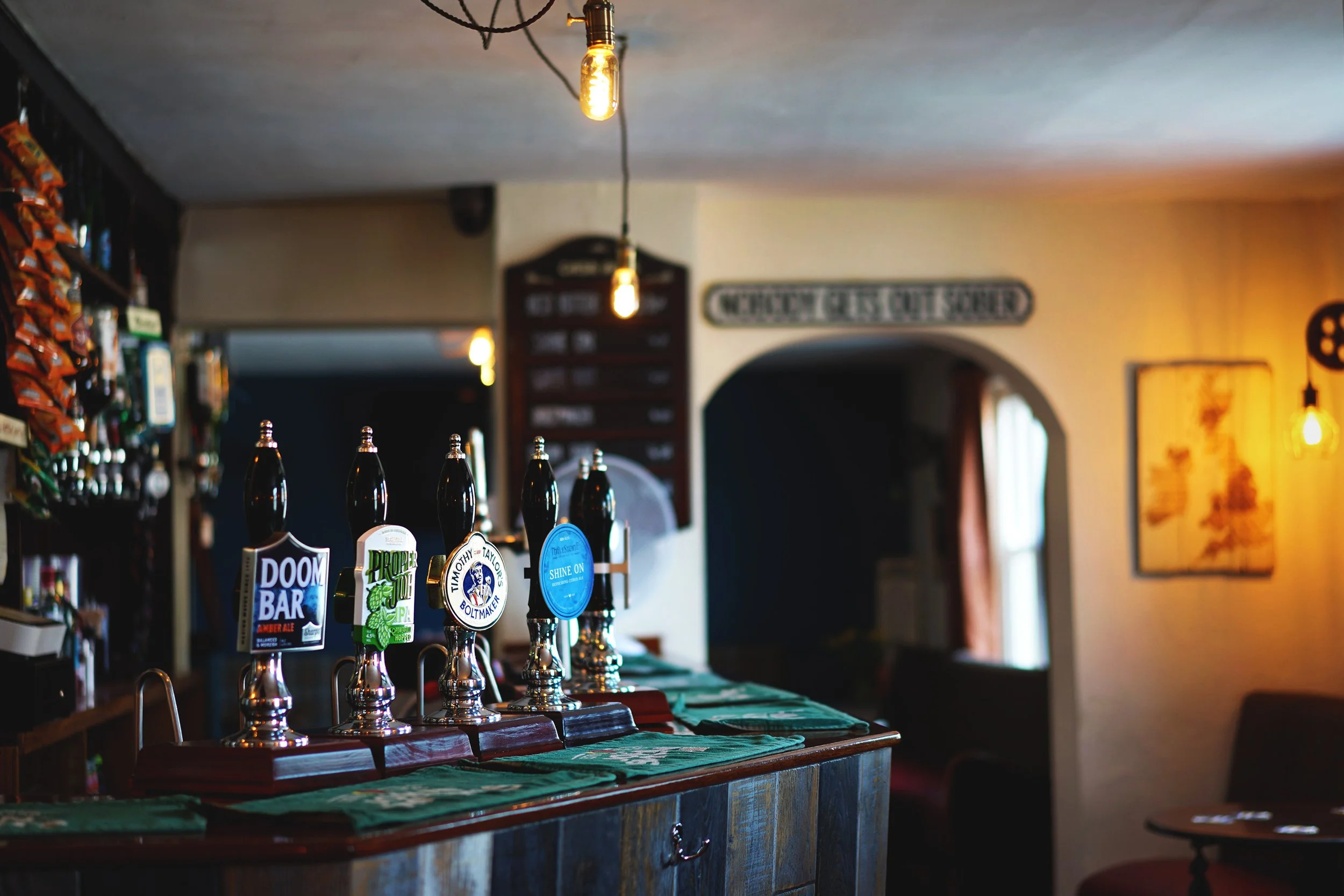Visions Of The Things To Be — How Mash Gang is Breaking the Alcohol Free Mould
“Whatever your normal is—and I don’t give a fuck what your normal is—you don’t have to justify yourself,” James Loveday, one of the five founders of Mash Gang, tells me.
“Your morals are for you, and your routines, and your relationship to alcohol, it’s for you,” he says. “If that means you can have one or two beers and then have non-alc beer because you’ve capped yourself, that’s fine. If you’re completely sober, we’ve got you.”
It’s an inclusive attitude to non-alcoholic beer, influenced by the group’s past experiences, by addictions and obsessions. And it’s seen Mash Gang grow from a disparate group of mates with no thoughts of even starting a brewery, to becoming one of the highest-regarded low alcohol breweries in the world, changing the way many of us approach how we drink beer, all within four years.
***
Prior to the pandemic influenced lockdown of March 2020, they were an unlikely bunch: James was working in business development for a tech company; Jordan Childs was running a tattoo studio; Mike Baggs, a Harvard-educated neuroscientist, was working in digital marketing strategy; Alex Loveday, James’s younger brother, was in bar sales and supply; Ben Gibson was Elton John’s tour photographer.
During lockdown, they started sending each other care packages—a mix of hard-to-find store cupboard ingredients, plus stuff they’d made themselves. Jordan sent bottles of homemade tepache (a fermented pineapple drink from Mexico). James sent hot honey and hot sauce.
“The joy came from sending and receiving things though the post,” Jordan says. “Plus we’d have something to talk about.”
Illustrations by Eilis Dart
A few of the group were messaging about the craft beers they were drinking. As Jordan didn’t drink much alcohol, he ordered cases of the most interesting alcohol-free beer he could find, and mailed them around.
The way Jordan remembers it, James made a throw-away comment about how even the best non-alcoholic beers were not as good as regular beer. Jordan is both obsessed with beverages and obsessive about trying to make things work. Despite having never brewed beer before, he believed that it must be possible to make an alcohol-free beer which tastes as good as an alcoholic one.
“How hard can it be?” he told the others.
***
In 2018, James, Jordan and Mike conceived a “barely legal” gummy worm-flavoured pre-workout supplement.
“The main ingredient was developed for a cough medicine,” James says. “It’s from walnut extract, it’s a mild stimulant, and in terms of legality it was essentially fine because it was classed as a novel food,” he adds, before Jordan cuts in.
“It was like trucker’s speed.”
They called it Snake Oil and had samples made in Florida. “It tasted absolutely vile,” Jordan says. “But everyone who was trying this stuff was like: ‘this is it, this is the breakthrough.’”
They decided not to skirt the “barely legal” issue, but it was the first time these old school mates developed an innovative product for a market which was both saturated and yet lacking inspiration. It was the first time they took one of those dumb ideas that mates often chat shit about, and took it beyond the end of the joke. They went and made the thing.
***
Jordan built a 19 litre brewing kit and started experimenting by taking extract homebrew kits and adding less of the extract. That made sense to his basic understanding of fermentation—sugar turns into alcohol, so less sugar means less alcohol. Most beers failed, but each failure taught him more. It kept him busy, and it was a welcome distraction from the pandemic.
The first beer that was good was an amber lager. Jordan sent bottles around to the guys. They liked it and they called it California Uncommon, which got them to a Snake Oil moment—stop there or make more of the thing.
“I am envious of anyone who has a hobby and that’s just what they do,” Jordan says. “To me, the validation of whether you’re good at something is if someone else wants to buy it.”
They scaled-up the recipe to 100 litres in August, and mailed out bottles to bars and retailers. BrewDog’s Old Street bar—which was then an alcohol-free bar—offered to host a Mash Gang tap takeover in October.
“It was almost like the gambler’s dilemma,” James says. They could walk away after investing a lot of time and emotion, or if they chose to do the takeover––and of course they would, that’s the kind of people they are––they had to brew and package much more beer, and that would be expensive.
“As a group we said let’s put a grand in each,” he says. “It was money we couldn’t afford to lose.”
They brewed six beers for the tap takeover: California Uncommon, a tropical fruit Berliner Weiss, a Kveik IPA, a morning Stout with coffee, a chocolatey evening Stout, and a peach cinnamon pie beer. There wasn’t any other alcohol-free beer like this.
““You can’t be an inclusive beer brand unless you include non-drinkers or people who want to drink less.””
“We thought that no one in their right mind would come out of lockdown and go to a ticketed event of a non-alc brewery,” James says. Especially for a brewery that could’ve been an online parody that had gotten itself into real life mischief. The tickets sold out.
That night people were asking what was next: “We were honest—it really is just kinda happening, and it’s fun,” Jordan tells me. “We didn’t have a plan, we didn’t have a compass, we didn’t have a destination.”
It was somewhere Jordan had been before.
***
Jordan has, he admits, never really known what he was supposed to do in life.
Most of his stories start with something that you want to go back to: “When I lived in Paris…” “When I worked in aerospace…” “When I moved to Vegas…” “When I was homeless…” But every story tangents somewhere new, which is equally unexpected and compelling, and so you follow him in that direction.
He has a lot of tattoos, many blacked out to cover up bad choices made when he was younger. He will eloquently and passionately talk about beer and beverages for hours, interrupted by stories of quests he went on for novelty or nostalgia. He’ll fixate on trying to succeed at something hyper-specific, like when he wanted to perfect an American lager—he brewed and dumped 600—six hundred!—batches before he was satisfied (“I’ve never known when to stop with something. The more it goes wrong, the more I dig in.”)
As a teenage musician his idols were swaggering rock stars. Drink and drugs were part of their act, and they became part of his. A reckless romanticism made him chase big dreams, though his waking realities were dead-end jobs.
Thinking he had a calling as a chef, he moved to Paris and spent most of his time chopping vegetables in a basement kitchen. He sofa surfed in New York while playing in two bands and working as a cycle courier and removals guy. He worked on a deli counter when he was the lead singer of a band in Nevada, until he was deported after overstaying his visa.
In 2008, at the age of 26, he quit the music industry altogether, and was working as a quality manager in aerospace weaponry, but he carried over the habits of a touring musician into regular life. He ended up in rehab for “drugs and alcohol as a terrorfest of things together.” Rehab doesn’t work for everyone, he says, “but it worked for me.”
“I don’t like the thought of being drunk anymore, whereas that was the thing I actually sought out before.” He drinks alcohol again now, but not much, and mostly low-strength beer. “There has to be a level of restraint, but it’s playing with fire. I can’t let go of the fear of slipping, and what I’d have to lose if I returned to the place that I was at.”
Jordan’s experience influences the way Mash Gang have approached alcohol-free beer, and their vision is an inclusive one—more people being able to enjoy beer together.
They don’t shout a sobriety rhetoric because they dislike marketing around fear. They don’t talk about their beer in terms of without––without the alcohol, without the calories, without the hangovers––because beer shouldn’t make you feel shame, or come with an apology. Their beer is everything you want in a beer––it’s social, it’s inclusive, it tastes good, you can have a pint with friends, even three or four pints––only you don’t get drunk.
It's endemic that cultural conditioning around drinking alcohol makes it one of few social activities that if you don’t do it, people think you have a problem.
“If you say, ‘I’m not drinking tonight’ someone might ask why,” Jordan says. “But if you say, ‘I’m not drinking this morning because I’m dropping my child off at school,’ it’s a very different conversation.”
If a person chooses not to drink alcohol––whether today, this month, forever more––it can lead them to avoid drinking situations or even seeing certain friends. After Jordan left rehab, “the saddest thing was, I stopped getting invited to the pub,” he says.
He still wanted to be there to see friends and to be in nice pubs, because he loves pubs and being with his friends. Being able to have a pint of alcohol-free beer instead of a Coke would’ve been even better. The Coke said ‘I’m not taking part,’ the pint said ‘I am.’ It would be irrelevant to everyone apart from Jordan that the beer contained no alcohol. It was more important to him that he still felt comfortable sitting at a pub table with mates, and drinking a cold, fizzy pint.
***
When you wonder how Mash Gang became a real thing, there’s no simple answer. “It was like boiling the frog,” Jordan tells me. “We barely noticed we were doing it until it was too late.”
As Mash Gang barrelled forward, they each found their own roles.
Jordan brews, and James manages overall operations and strategy. Alex leads sales and customer service. Mike contributes to strategy and Ben is there for creative input, though neither of them are full-time. They’ve since hired roles in finance and sales. They jumped up from 100 litre batches in early 2021, making their first full-scale commercial brew at Northern Monk’s Old Flax Store in Leeds.
“We were so out of our depth that day,” James says. But the more they worked with brewers, the more they understood the processes—and how to hack them to create the drinking characteristics they wanted. Without a beer background, they brought a new outlook.
“ “They don’t talk about their beer in terms of without... because beer shouldn’t make you feel shame, or come with an apology.””
They started adding chilli to evoke alcohol’s warmth. They found ingredients used in wine or spirits which help with body. They ordered things used in food production to add different flavours. Ideas came from many places: ice cream, hyped craft beer, sweet shops, cereal, industrial lager.
They’ve made beers inspired by (or actually brewed with) Sour Patch Kids, Pop Tarts, Nesquik, Lucky Charms, and frozen slushies. They brewed them because it was fun, and they loved the challenge of trying to recreate certain flavours in a beer format. As Steven Smith-Hay, co-founder of Vault City, tells me: “They’re beverage architects.”
They only made small batches of those novelty beers because they thought people would hate them, “but they were quite literally the turning point of the brand,” Jordan says. It got them attention and helped drinkers realise that alcohol-free didn’t just need to be regular beer, minus its alcohol. It also made people engage with them and ask questions, like ‘is it still beer?’
“If you argue that a 0.5% beer is not a beer, then I will argue that an Imperial Stout is not a stout,” Jordan says. “Making imperial beers and non-alcoholic beers are basically the same thing in the inverse. They’re both a bastardisation of the original processes to achieve a specific ABV outcome.”
Alongside the fun stuff, there’s a serious fascination with nailing classic beer styles, especially American-style light lagers, including their own: Stoop and Low Life. Stoop uses white oak chips, chardonnay wine tannins, chilli and Galaxy hops in a “a bougie retelling of American lager,” Jordan tells me. “Whereas Low Life is shit macro beer, deliberately made. It’s a colossal amount of work to make something so unremarkable.”
Both of those lagers took many, many failures before they were ready. Failure has been a big part of Mash Gang’s success, where every bad brew made them learn more. And as they began to fully understand processes, they did something which is fundamentally important to their story: they taught others how to brew alcohol-free beer.
***
“The one thing I most respect is how Mash Gang like to share information,” says Luca Lorenzoni, beer industry advisor, and former CEO of Northern Monk. “Jordan focused a lot on the innovation that other people were too busy to do. He’s not worried about people copying him, and he’s not one of these people that’s closed off.”
“He also knows that if you want to grow non-alcoholic beer you’ve got to make the overall offer better, and the more brewers making good non-alcoholic beer, the more people are going to adopt those choices,” Luca adds.
“We wanted to be the Johnny Appleseed of NoLo,” Jordan says. They’d go to breweries, teach them how to make non-alcoholic beer, and together make something that reflected the host brewery’s beers. Releasing a co-branded beer helped spread the Mash Gang name, and got more interesting low alcohol beer in front of more drinkers, building excitement and acceptance as more new non-alcoholic beers came out.
“We’ve got a fanbase that is open to crazy and unique flavours,” Steven at Vault City tells me, “So when we came out with an alcohol-free strawberry margarita jalapeno pickleback, they were excited to try it.”
They’ve also brewed a Kir Royale-inspired beer, and a breakfast pancake beer together. “We’re learning a lot from Mash Gang who have never had a brewery and have never been brewers,” Steven adds. “If you go at something without the blinkers on then you’ve got a lot more colours to paint from and a lot more tools at your disposal.”
In 2023, Mash Gang began brewing their beer at Pilot Project in Chicago and Milwaukee, to sell in the US. “The brilliance of their perspective is that they could make alcoholic beer all day if they wanted to, but you always have to figure out what your restraint is,” says Dan Abel, Pilot Project’s co-founder. “It’s constant experimentation, or I think of it as ongoing problem solving. The beautiful product that comes out is a result of a lot of hard work, calculation, science. It’s constantly exciting.”
““They’re beverage architects.””
Mash Gang now brews most of its core range beer at Fierce Beer in Aberdeen. “Behind the headline recipe, the things that go into the beer, even in the smallest of additions, makes such a big difference,” says Dave Grant, Fierce’s co-founder. “What Jordan can bring along with his strange ideas, it’s amazing. It’s a fantastic learning process for everyone.”
Fierce have since brewed some of their own alcohol-free beers with the help of Mash Gang, and he’s seen how they are helping others. “A rising tide lifts everybody,” Dave tells me. “To be honest with you, it’s their ideas that everyone’s using, to an extent.”
***
The Gang have disrupted the alcohol-free category and brought new ways of thinking about the beer industry. Underlying it all, however, is a deep affection for pubs and an understanding of the generational social significance of alcohol, and how that’s changing. Because it is changing.
“God, I love a pub fireplace,” Jordan says, unrelated to what he was saying moments earlier.
“The pub is the heart of the human psyche,” he says. “You drink when you lose, you drink when you win, you drink when you’re happy, you drink when you’re sad, but also a load of us had pretty tiny houses and the pub is a nice, open, warm environment.”
As alcohol habits change, pub-going habits shift with them. But they don’t have to.
“Despite it sounding like the most ludicrous thing, if anything can save pubs in the UK, it’s that more people can drink at them more often,” Jordan says.
“What brings people into the pub, and what keeps them in, is inclusivity,” James adds. “You can’t be an inclusive beer brand unless you include non-drinkers or people who want to drink less.”
In 2024 Mash Gang’s focus is on getting more kegs of their beers into pubs and bars. Their vision is that venues should have a range of draft beer strengths from zero upwards, though there doesn’t need to be a neon sign flashing alcohol-free above that tap.
When the beer is poured into a pint glass, it looks, feels and tastes like the other beers on the table. “Beer is beer,” says Jordan, whether it’s 0.5% or 9.5% ABV. It’s about choice and respect. If you choose to shout about drinking a Mash Gang beer, they’ll echo your support. If you choose to drink with anonymity, they fully respect why you might want to do that.
***
Four years ago, a few mates were just trying to find a way to get through a pandemic. They weren’t deliberately working towards becoming a beer company. They’ve had a lot of fun, but fun doesn’t pay mortgages, and they’ve nearly quit numerous times.
“Without hyperbole, we’ve not seen a fucking blue-sky day,” Jordan says. “We started in a pandemic, selling a product people didn’t want, in a market that didn’t exist, with no money behind us. How the fuck could it possibly get worse?”
But they stuck at it because they love making these beers and seeing people enjoy them, and they’ve been at the forefront of a shift in the sentiment towards alcohol-free beer. They’ve taught dozens of breweries how to make it, and more low alcohol beer exists because of Mash Gang. They’re a multimillion-pound business now, making some of the highest-rated alcohol-free beers in the world, brewing in the UK, US and Australia, with beers available in five continents. But they’ve kept something integral to the very beginning of their journey: sending nice beer to each other.
Their subscribers receive a monthly delivery of Mash Gang, which always features specials just for those boxes. “This is the thing that we get most joy out of doing,” James tells me. “It’s a birthday moment every month when the beers have arrived. It’s interesting, it’s fun, and it feels like I’m part of something.” With hundreds of members, the Gang is much bigger now.
Mash Gang often talk about being included, or as James says: “standing in a round.” The idea that someone can drink pints along with others, and feel part of the group without having alcohol. That’s important.
“Some of us are sober, some of us aren’t,” James says. “Some of us are cutting back, some of us can’t get past January without quitting a gym membership. It doesn’t matter. It’s just that societal norms are focused on drinking culture and alcohol. But that doesn’t matter. It’s my glass of beer and I’ll have what I want in it.”


